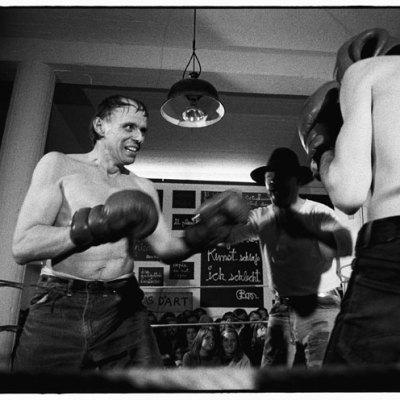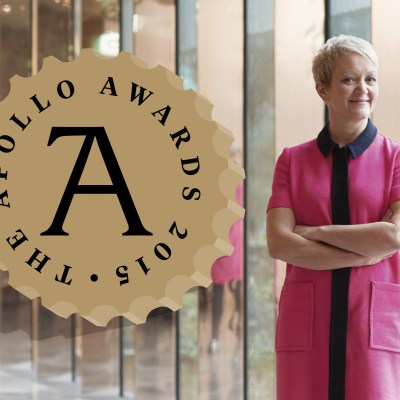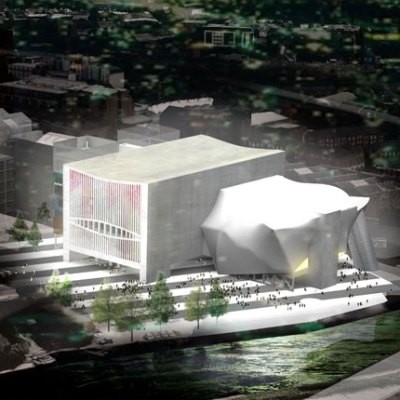Leeds Art Gallery, which has been closed for nearly two years for essential repairs to the original roof and related renovations, reopened to the public on 13 October. The curators have not been idle during the closure, but, making a virtue of necessity, have undertaken a fundamental rejuvenation of the way the 130-year-old institution and its collection are presented. The gallery now boasts important new commissions and acquisitions, a comprehensive rehang of the collection displays, and a major loan exhibition of works by Joseph Beuys. Reasons enough to visit, but I was also intrigued to find out whether the revamp marked a shift in attitudes in the way that Leeds regards its art gallery.
Like many of the other big industrial cities of Victorian Britain, Leeds established an art gallery out of a sense of civic pride and a paternalistic concern to improve the lives of working people. The town authorities were not afraid to spend money on its civic buildings: one look at the imposing edifice of the nearby town hall, one of the most impressive in Europe, will tell you that. But it took another 30 years after completion of the town hall for the council to get around to building an art gallery, and then it was done on the cheap, paid for by public subscriptions raised in honour of Queen Victoria’s Golden Jubilee in 1887. Completed in 1888, the gallery was an extension to existing municipal buildings. It was not until 1952 that it got its own front door.
The building lacks grandeur on the outside, but the interior has some merits. There is the impressive Tiled Hall, which was once a sculpture gallery. Refurbished in 2007, it is now sadly used as a café. From the gallery’s entrance hall, a compact but elegant staircase ascends to a suite of airy, top-lit galleries on the upper floor.
The Arnold and Marjorie Ziff Gallery at Leeds Art Gallery, which contains a circle of marble busts and a collection of Victorian paintings. Image courtesy Leeds Art Gallery

At its inception Leeds was an art gallery without any art, and for its early exhibitions it relied on artists’ society shows and loans from local collectors. This situation soon changed as it received gifts and substantial bequests from wealthy industrialists. But there was a step-change in the approach to collecting in 1912 when the gallery’s newly appointed curator, Frank Rutter, and a group of wealthy supporters set up the Leeds Art Collections Fund. This became, and remains (now the Leeds Art Fund), a vital source of funding for acquisitions, and, importantly, is independent of the city authorities. Around the same time the collecting policy turned away from traditional Victorian and Edwardian paintings towards modern British art. This is where the main strength of the collection now lies: in 20th-century British art, with notable works by Francis Bacon, Stanley Spencer, Barbara Hepworth, Henry Moore and Paula Rego, for example. The modern sculpture collection is second only to the Tate’s in the UK in its breadth and importance.
The total cost of the refurbishment was £4.55 million, of which £4.1 million was paid for by Leeds City Council. Leeds is bidding to be European Capital of Culture in 2023 and the council’s investment supports the bid, recognising the important place the gallery occupies in the city’s cultural heritage. As museum redevelopments go, however, this is relatively cheap: by way of comparison, the new Tate St Ives, which reopened the same week as Leeds’ gallery did, cost £20 million.
Installation view of Arena (2000), Alison Wilding (b. 1948). Leeds Art Gallery. Photo: © Jerry Hardman Jones; courtesy Leeds Art Gallery

The renovation project started as a scheme to fix long-standing problems with the gallery’s roof. However, shortly after the work began, a ‘welcome discovery’ was made in the shape of a Victorian barrel-vault glazed roof concealed behind a false ceiling for over 40 years. The council was persuaded to put more money into the project so that a more extensive renovation of the Victorian glazing could be carried out. As a result of these improvements, light now floods into the upper floor galleries, and it is in these refurbished rooms that new collection displays have been installed.
A new gallery space has been created beneath the barrel-vault roof, containing just one work: Alison Wilding’s Arena (2000). A bowl-shaped structure constructed of concentric circles of transparent polycarbonate sheets, it benefits from being well lit, diffusing the light that falls on to it, to create an aura of shadows and reflections in the surrounding space.
A newly commissioned mural, Xanadu, by German abstract artist Lothar Götz, now graces the wall above the Victorian staircase, following a successful Art Fund public appeal. It is a dynamic design of kaleidoscopic colours and geometric shapes that leads the viewer up the stairs into the upper galleries.
Installation view of Xanadu, 2017, Lothar Gotz (b. 1963). Leeds Art Gallery. Photo: © Jerry Hardman Jones; courtesy Leeds Art Gallery

The new hang is thematic rather than chronological. The curators have focused on showing the breadth and diversity of the collection, making space for works rarely seen instead of relying on the ‘greatest hits’. With more than 8,000 works in the collection, there is much still in reserve offering considerable potential for changing displays and temporary exhibitions in the future.
The exceptions to this thematic approach are two rooms that effectively act as book-ends to the collection displays. One room contains acquisitions from the past decade, including Fiona Rae’s painting Present party for you (2012), and Hilary Lloyd’s installation Movie (2015), which is being shown here for the first time. The second room contains works acquired during the first 12 years of the gallery’s life (1888–1900). Placed centrally is a circle of marble busts: portraits of the patricians who were instrumental in establishing the gallery and its collection. They look out at a close-hang of Victorian paintings, including local favourites such as Elizabeth Butler’s Scotland for Ever! (1881) and Iris (1886), by the Leeds-born artist John Atkinson Grimshaw. The intention is to demonstrate that Leeds has had, throughout its history, a policy of collecting the art of its time.
The ground-floor galleries are set aside for temporary exhibitions. ‘Shelter from the Storm’ is an extensive display of watercolours and drawings by John Sell Cotman (1782–1842), and an opportunity to show some of the gallery’s significant holdings of works on paper. The Joseph Beuys exhibition is spread across three rooms and features sculpture, drawings and installations selected from the Artist Rooms collection, jointly held by Tate and the National Galleries of Scotland. Both of these temporary displays run until 21 January 2018.
Felt Suit (1970), Joseph Beuys (1921–86). Tate/National Galleries of Scotland

Though it is proud of its Victorian heritage, Leeds is keen to lose its mill-town image and to be seen as the modern city it has become. The third largest city in the UK, it has one of the country’s most diverse urban economies, and is a major centre for finance and professional services. It is home to around 80,000 students. The bid to be European Capital of Culture is about ensuring the cultural life of Leeds matches its stature as a city. It is also about changing perceptions, within Leeds and nationally and internationally. A revitalised Leeds Art Gallery will help. But I feel what would really make a difference would be a prestigious new building, a museum with a profile commensurate with the nationally important collection, and a statement of Leeds’ commitment to the arts.
This article was published in Apollo’s December issue, prior to the announcement on 23 November that the UK bids to be European Capital of Culture 2023 had been cancelled.
From the January issue of Apollo: preview and subscribe here.


